How To Choose A Headphone: An Ultimate Buying Guide
by Simon
When you are looking for a new headphone, there are many factors that you should consider. First, of course, you want to make sure that the sound quality is good because it's what you will be listening to all day long. However, other factors can also come into play when choosing which one is best for your needs. This blog post talks about choosing headphones so that you get the perfect fit and an excellent listening experience.
Read this Buyer's Guide carefully to understand the choosing process of a headphone.
I hope you will be able to understand the procedure and know how to pick the right headphone for a given situation.
Contents
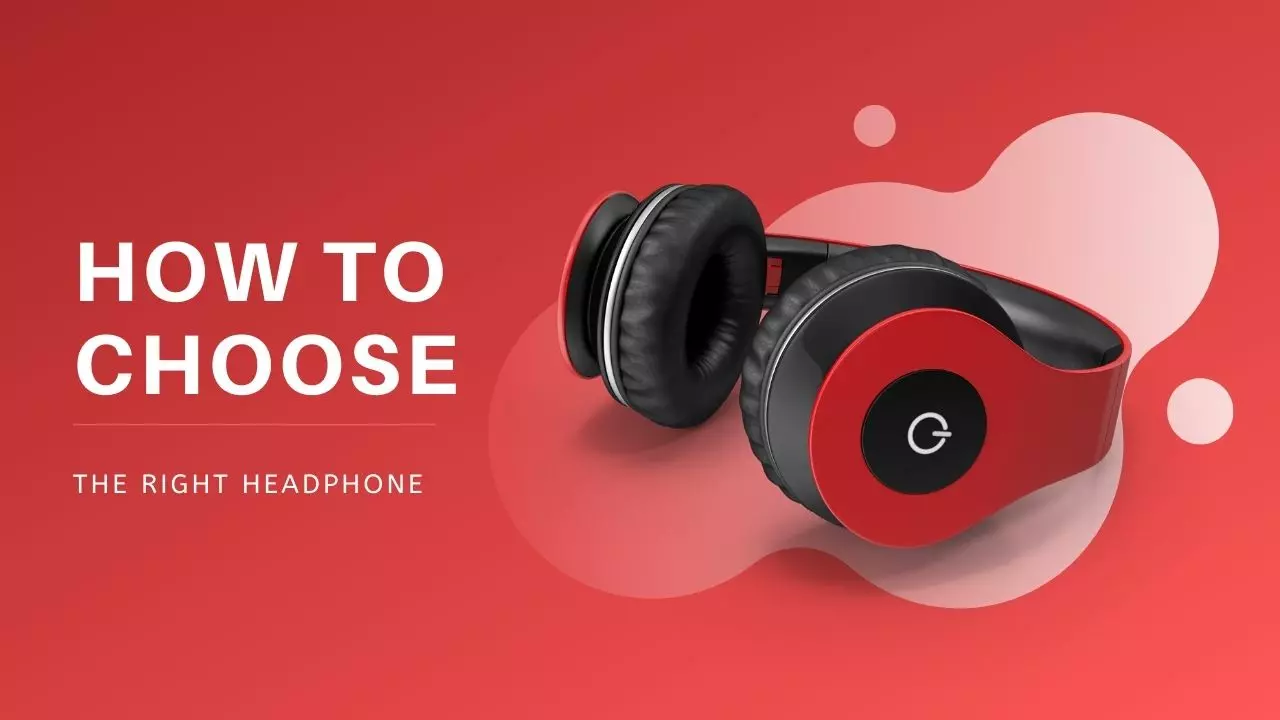
Types of Headphones
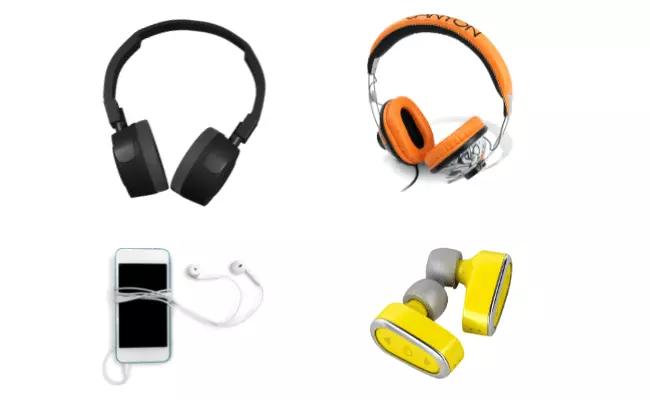
There are many types of headphones. That is because they are used for a variety of things. That is why they come in all shapes and sizes for the ease of specific users. All types of headphones have their pros and cons. Here are some of the most common types:
- Over The Head (Circumaural)
- On-Ear (Supraaural)
- In-Ear (IEMs or Ear Canal Phones)
- True Wireless Earbuds
Over-Ear Headphones
Over-the-head headphones are the most significant type. They completely enclose your ear to create a seal that blocks ambient noise from interfering with your listening experience, which is why they're often used by sound engineers and musicians as well as those who work in loud environments. Over-ear headphones typically have significant drivers for powerful bass and extended treble response, but some models sacrifice comfort to achieve higher volumes at lower frequencies. Examples of over/on-ear headphone brands include Bose, Beats By Dre Pro, Sony MDR V600DJ Headphones.
Some models feature a flip design where the earcups can be folded inward so you can easily store them or rest around your neck when not in use. Admittedly, these headphones come at a higher price point, but they are designed and comfortable.
On-Ear Headphones
On-ear headphones rest on top of your ear without surrounding them like over-ear models do, making these types a little smaller than the former and thus lighter. The earcups are usually held in place by small plastic arms that fit into pockets worn around your neck or behind your head to help keep them secure during movement. While they don't cover the entire ear, the seal created with on-ears can be solid enough for most uses if you find a comfortable pair, such as Sony Wireless Headphones WH-CH510. Some even come with dual inputs so two people can share music at the same time.
These types of headphones are usually loved by people who love to listen to music because they are lighter and more comfortable. The downside is that their smaller size means a slightly lower driver for less bass response, but on the upside, it also makes them ideal for portable use since you can easily carry them with your smartphone or tablet when needed.
In-Ear Headphones
Another type of headphones are earbuds that sit inside your outer ear canal to seal sound in place so no outside noise gets through. They're typically tiny devices that come with three separate tips (S/M/L) for different ears, which helps keep them secure during movement and provides better audio quality than other types due to their snug fit within the ear without any ambient noise competing against it. Music on the go.
True Wireless Earbuds
True wireless earbuds are entirely cordless and come in either a neckband-style design where the two earpieces connect via a band around your neck or different methods like Apple AirPods. These headphones don't require any cords because they're small, compact Bluetooth headsets that can be worn just about anywhere. In addition, they let you listen to music without worrying about wires getting tangled up when moving, which is perfect for doing physical activities such as jogging or working out at the gym. However, the downside with these types is that their battery life isn't perfect, so it's important to remember to recharge them after use.
Categories of Headphones
The headphones are further categorized as Open-Back or Closed-Back headphones.
Open-Back Headphones
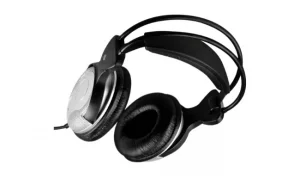
These types of headphones rely on a ring or large vent to let air in and out, which gives the sound its open quality. The advantage of this type of design is that it provides better airflow for accurate reproduction without adding pressure. Still, they also leak more noise than closed models, so you'll want them at home rather than in public, where people around you can easily hear your music too. Open-back headphones typically have more significant drivers for low frequencies and tweeters geared toward the earpads to create an expansive stereo image when listening to music. These types of headphones are best suited for classical music.
They are used mainly by audiophiles who crave the best possible sound quality, so they come at a higher price point. Find the best open-back headphones for gaming here.
Closed-Back Headphones

These types of headphones are better for use in public since they don't leak much sound. They're mostly made from plastic or aluminum, but you can also find wooden models out there that produce warmer sound quality with less noise being leaked outside the earcups. In addition, closed-back designs typically have smaller drivers who are angled away from each other to create an immersive stereo image when listening to music. Hence, it feels like you're sitting in front of speakers at home rather than on public transit where everyone around you can hear along too if your volume is turned up high enough.
The downside with these kinds is that their small size means less low-frequency driver space and thus produces weaker bass responses. But, on the other hand, these types are cheaper because they don't require much material and can be mass-produced.
Wired vs. Wireless Headphones
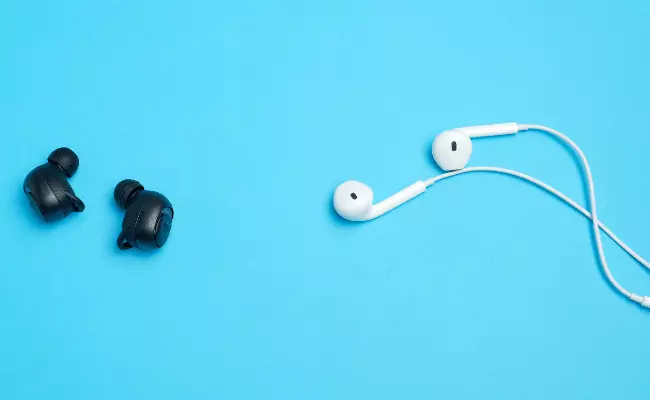
Another essential factor to consider when buying a headphone is whether you want them wired or wireless. Whether one type of connection over another is better largely depends on what you plan to use the headphones for, but here are some general guidelines:
Wired Headphones
These types of headphones come with either an audio cable that plugs into your device's earphone jack or USB port, which then connects directly to the driver unit inside each earcup where there should be at least two ports (left and right), so they can separate stereo signals properly without crosstalk interference between channels. The advantage with this kind, like other traditional models, is that it doesn't require batteries, nor do they rely on Bluetooth connectivity which means no latency issues during music playback as well. Moreover, they have better sound quality.
However, they may limit your movement since you'll need to make sure your audio player is within range and will require a wire running across the floor which can be annoying if it snags on something like an object or person walking by.
Wireless Headphones
These types of headphones can be paired to your device wirelessly via Bluetooth connectivity. The advantage of these kinds is that it allows for more freedom since you won't need a cable running across the floor, which could get in the way or accidentally trip over when moving around. Still, they will require batteries and tend to have weaker signal strength than wired models, so there's always the risk of possible latency issues during music playback if this becomes an issue.
Moreover, their sound quality isn't as good because wireless signals introduce noise into audio files, especially at lower frequencies where human ears are most sensitive, just like radio static. Moreover, you can know how to fix static noise on headphones here.
Which Ones Are Better?
Wireless headphones are fabulous for listening to music while doing other things like exercising or commuting. Still, wired headphones are better if you want a high-quality sound that's close to the original recording without any added noise.
Sound Quality
Consider the sound quality of a headphone you want to buy. This will be determined by multiple factors, including frequency range, noise isolation or cancellation (NC), virtual surround technology, which allows for simulated multi-channel audio via stereo speakers that are built into each earcup without actually having separate drivers in everyone like other models do so they'll have better directional accuracy than those with just two drivers per cup.
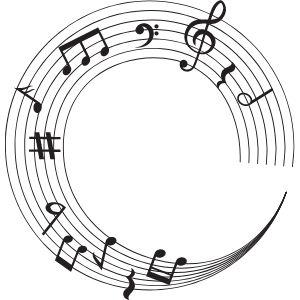
Moreover, it depends on whether these types come with different equalizer settings and how much low-end bass frequencies there are compared to mid-range sounds since too much lower stuff can make your music boomy. At the same time, not enough can cause it to feel weak if this becomes an issue depending on what kind of genres you prefer listening over more extended periods.
Driver Unit
The driver unit is another crucial factor to keep in mind, especially since it's what produces a sound that will range from 20mm (0.79in) on the smaller side up to 45mm (about 17/32in), but this comes down to personal preference as well depending on how you listen over more extended periods including using different genres or frequency ranges that aren't available like low-end bass frequencies greater than 60Hz.
The only downside of larger units is that they tend not to be portable due to their size and weight, so there are tradeoffs here with portability vs. better audio quality as a direct result of having more powerful internal components for vivid sounds at lower frequencies where human ears are most sensitive just like radio static if this becomes an issue.
Frequency Response
The frequency response of a headphone also determines the number of different sounds you'll be able to hear, with some being better than others, so it's essential to know your preferences. For example, some headphones offer audio over higher frequencies like 13kHz or 20kHz. Still, not everyone will want this since they might not prioritize high-end sound quality as much, especially if their music library doesn't have many songs that cover these ranges unless they're using more expensive equipment for recording purposes.
The only downside is that lower-end models don't always produce even bass at higher volumes because there isn't enough power available without distorting them in ways that most people won't notice depending on how loud they listen and where they position themselves relative to speakers.
Impedance Rate
The impedance rate of a headphone also determines how much power is needed to get the most out of them, which is why it's essential to keep this in mind depending on what you plan on doing with them since lower-end models are only compatible with audio devices that have enough voltage or currently available. So, if they're not powerful enough, they'll only produce a quieter version of whatever sound is coming from them, even if you turn up the volume as high as it can go to compensate for this. Still, the quality will diminish over time, especially with more complex sounds like those at lower frequencies.
Higher impedance headphones require more power to work. You might need an amplifier or a sound card.
Sound Pressure Level or SPL
The sound pressure level, also known as the SPL, is another factor to consider when buying headphones mainly since it determines how loud they'll get overtime. So, for example, if you're someone who listens to music on an audio device with less than 200mW of power or lower-end equipment for recording purposes, then you'll want something that can go higher than 100dB. Still, if you're using something that has more power or greater audio fidelity, like studio monitors, for example, then it might not be necessary to get the best.
Surround Sound
Surround sound in a headphone is another thing to consider depending on what you plan on doing with them especially since this technology can be expensive if it's not included. For example, there are some brands that give you the option to turn surround sound on or off to save battery life when listening wirelessly which is useful for those who want better audio at home without needing something extra like rechargeable batteries but aren't planning to use these headphones away from their supporting devices unless they're Bluetooth-compatible though wireless models don't necessarily have lower latency than wired ones either especially over longer ranges where RF interference might become an issue.
The only downside of getting surround sound in a headphone is that it usually increases the weight and size due to having more internal components to support the technology which also affects battery life over time.
Comfort

Also, consider the level of comfort when buying a headphone. This will be determined by multiple factors, including weight, earpads and headband material, size (closed vs. open), cable length, or wireless connectivity, which can all affect how long you can wear them without discomfort so take your time to try each pair on before purchasing if possible even if it means running around different stores for this purpose. The last thing anyone wants is for their headphones to give them headaches after extended use.
It can be determined by comfortable padding on earcups and headbands with soft cushioning around the ears, but this comes down to personal preference since everyone has different tastes in what they want from their headphones, especially if you're fine using your current one even though it doesn't fit comfortably over time depending on how often you use them (daily vs. weekly). The only issue is that not every pair will be comfortable enough for extended periods because some people don't mind having something pressing against their heads. In contrast, others want to feel like they're not wearing anything on top of their skull.
Remember that just because other people like one brand doesn't mean they'll work well with your ears since everyone's hearing is unique. Also, what sounds excellent may not sound good at all once worn by someone else, while what works fine might become uncomfortable quickly over time.
You can also check these things online reviews and product specifications to determine what kind of material is used for the headphone.
Build Quality
The build quality of a headphone is also essential because it will affect how long they last. Look for something durable enough to withstand falls or being crushed by objects without breaking, but if you can't afford the most expensive option, prioritize sound quality over design since plastic materials are cheaper than metal ones, especially in entry-level models. You can find the most durable headphones here.

However, you can check these things to assess the build quality when buying a headphone:
- Metal materials instead of plastic for better durability and sound quality.
- Flexible headband or at least easy to bend without snapping.
- No loose parts like screws could fall out when handled roughly.
The excellent quality headphone will be durable enough for everyday use. It won't break even after falling several times or being crushed by objects like books which is the most common reason people throw away old headphones to replace them with newer models because it's cheaper than fixing broken ones, especially if you don't have insurance coverage in case something breaks unexpectedly. However, this doesn't mean that high-end models are always better since some mid-range options might fit your budget without sacrificing sound quality just as well.
As a result, no single factor makes one headphone better than another since each person has different preferences regarding comfort levels, sound quality vs. price point, and design aesthetic.
Battery Life
Another factor to consider when buying a headphone is the battery life because it will affect how long they'll last between charges. Low-end models can only go for about eight hours before dying, even if you use them with an audio device with plenty of available power. Still, mid-range options might last up to 16 hours on average, while high-end models could have over 30 hours without needing another charge in some cases, which means less time unplugged and more freedom moving around wherever you want.
Water-Resistance
Water-resistance is another factor to consider when buying headphones because some models are designed with this in mind. Look for something that has the IPX rating, especially if you plan on using it while working out or going somewhere rainy, but remember, not all headphones have this feature, so make sure your budget reflects its absence before making a purchase.
Active Noise Cancellation vs. Noise Isolating
There is a big difference between active noise-cancellation and noise-isolation. The active noise-cancellation uses the microphone to monitor and judge the audio waves (audio waves of the noise) around the headphones and create a counter-wave (perfectly opposite to the primary audio-wave) to negate the audio. The noise gets nullified before it reaches the ear. You can find some Active Noise-Cancelling Headphones for Gaming.
On the other hand, noise-isolation headphones use physical barriers or soundproofing technology to block the outside noise from entering the earcups. Just like your soundproofed rooms, it blocks the audio waves outside.
Both of these headphones have their own Pros and Cons.
Headset's Microphone
The last feature to consider when buying a headset is the microphone that can be attached or detached depending on your needs. The best professionals don't have one because they train themselves against relying on audio equipment. However, it's still useful for gaming and recording video with different sound effects included, especially if you want to make videos of yourself playing games while talking through voice chat software like Discord which requires good quality microphone input to function. You can find the best headsets for streaming here.

If this sounds interesting, then look into getting some high-quality headphones with built-in microphones since these will give you more flexibility over what devices you use them on without needing extra adapters unless they're wireless models which support Bluetooth connectivity instead of requiring wired connections via USB ports or even an auxiliary jack port so keep that in mind as well.
However, you can also buy separate microphones that connect to your headphones wirelessly or through a cable, depending on what kind of headset you have, which means it will be more flexible since they're not permanently attached if you need them for different purposes at home or work.
As a result, the best advice is to experiment with several types of headphones until you find models that fit both your budget and needs, so don't rush into buying something without knowing exactly how much money is required because it's better to spend twice the amount than being underwhelmed by low-quality headsets.
Find the difference between headset and headphones here.
Price of a headphone
For those on a budget, you can start with earbuds that cost anywhere from $20 to as much as $300, depending on the brand and features included. However, if your budget is higher, look into getting more high-end options like over-ear headphones, which don't have wires attached and allow for better sound quality and active noise cancellation technology.
Here are my few articles based on price.
- Best Gaming Headset Under $200
- Best Gaming Headset Under $150
- Best Gaming Headphones Under $100
- Best Gaming Headset Under $50
Hence, they're perfect for canceling out background sounds while listening to music or watching videos without needing any extra tools or devices required. Furthermore, some of these types of headsets even come equipped with built-in batteries that let you use them wireless instead of being plugged in via an auxiliary cable port, especially since there's no way to replace them when their battery drains after several hours too.
Conclusion
In conclusion, there isn't one single reason why someone should buy headphones since everyone has different preferences and listening habits when choosing between brands and styles of headphones. However, there's still plenty of information about what makes an exceptional pair regardless of which ones you desire as long as they fit your needs, like sound quality vs. price point, comfort levels, design aesthetic, among others. Furthermore, look for durability over aesthetics, battery life over continuous playback time, and water-resistant features if necessary.
Related Posts
Why You Should and Shouldn't Use Headphones for Workouts
Hearing My Own Voice On Headset: What It Means & Why
Do Headphones Cause Hearing Loss: Prevent & Treat
 |
 |
 |
 |
About Simon
Simon here is an audiophile that loves to try out new audio equipment and loves to listen to different genres of music. Being an active student of Audio Electronics, He is more than capable of discussing different elements of headphones. A Powerful Music Can Change The Tone Of Your Heart, That Is The Real Power Of Music.
Thoughts on "How To Choose A Headphone: An Ultimate Buying Guide"
 |
 |
 |
 |
Get FREE Headset Gifts now. Or latest free Music Guide from our best collections.
Disable Ad block to get all the secrets. Once done, hit any button below
 |
 |
 |
 |